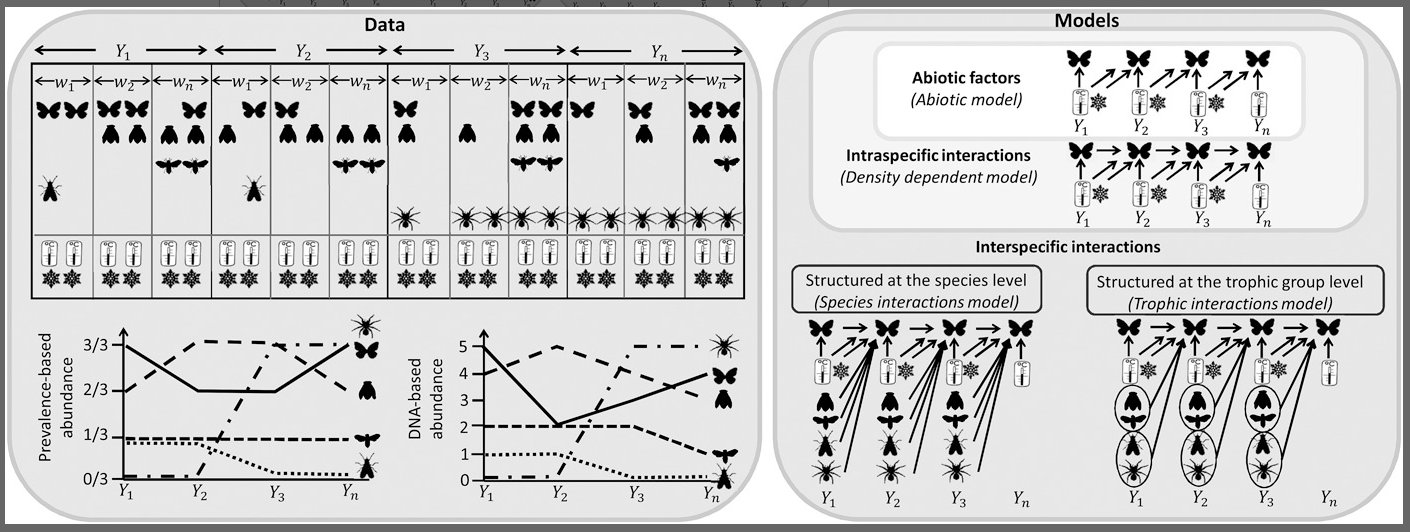Accounting for species interactions is necessary for predicting how arctic arthropod communities respond to climate change
New publication by Nerea Abrego, Tomas Roslin, Tea Huotari, Yinqiu Ji, Niels Martin Schmidt, Jiaxin Wang, Douglas W. Yu, Otso Ovaskainen

Abstract:
Species interactions are known to structure ecological communities. Still, the influence of climate change on biodiversity has primarily been evaluated by correlating individual species distributions with local climatic descriptors, then extrapolating into future climate scenarios. We ask whether predictions on arctic arthropod response to climate change can be improved by accounting for species interactions. For this, we use a 14‐year‐long, weekly time series from Greenland, resolved to the species level by mitogenome mapping. During the study period, temperature increased by 2°C and arthropod species richness halved. We show that with abiotic variables alone, we are essentially unable to predict species responses, but with species interactions included, the predictive power of the models improves considerably. Cascading trophic effects thereby emerge as important in structuring biodiversity response to climate change. Given the need to scale up from species‐level to community‐level projections of biodiversity change, these results represent a major step forward for predictive ecology.
